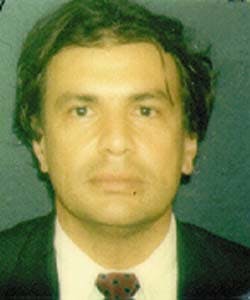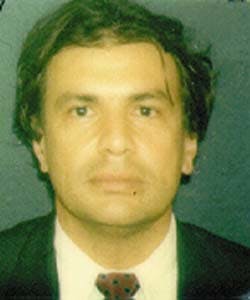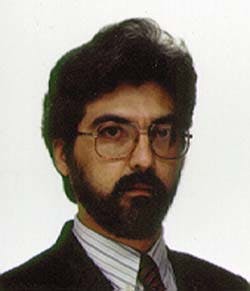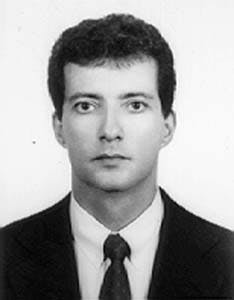Pedro J. Barusco F., Ricardo Juiniti, Marcos G.G. Morais
Petrobras E&P
Rio de Janeiro
ABOUT THIS REPORT...This production report describes advances in technology that permit oil and gas production from deeper water and tighter and more complex reservoirs. Offshore Brazil, a well recently set a record for producing oil from the deepest water. In South Texas, an operator applied advanced technology to increase production from a low-permeability, depletion-drive reservoir. New wire line tools and interpretation techniques provide continuous well permeability profiles ideally suited for analyzing complex reservoirs.
Petroleo Brasileiro SA (Petrobras) set a new water depth record of 1,709-m (5,607 ft) when it began producing oil from the South Marlim 3B (6-MLS-3B-RJS or MLS 3B) well on Aug. 13.
South Marlim field (Marlim Sul), offshore Brazil in the Campos basin, is in water depths that range from 720 to 2,600 m (2,362-8,500 ft).
The well Marlim 4 (3-MRL-4-RJS), producing from a water depth of 1,027 m (3,369 ft) since 1994, contributed to the studies that showed the economical and technical feasibility of producing South Marlim.
Initial development plans called for installation of two semisubmersible producing units with a processing capacity of 150,000 b/d. But after MLS 3B drill stem tests, Petrobras decided to start production with an early production system that would provide more information about the reservoir and would also allow testing of deepwater production techniques, developed but not yet field tested.
MLS 3B produces to a floating producing, storage, and offloading vessel (FPSO 2) moored in 1,420 m (4,659 ft) of water. Initial production, on Aug. 13, was 5,000 b/d and 50,000 cu m/day (1.8 MMcfd) without gas lift. Coincidentally, Aug. 13 was also the 20th anniversary of oil production in Campos basin.
South Marlim field
South Marlim field1 was discovered in November 1987 by the wildcat Well 4-RJS-382, which found Oligocene sandstones saturated with oil. The field is 110 km (68 miles) off the northern shore of the Rio de Janeiro state (Fig. 1 [20,158 bytes]). Water depth varies from 720 m in the north to 2,600 m south of the field.A 3D seismic survey covers the field up to a 2,000-m water depth, and 2D lines cover the remaining portion. Twelve exploration wells have been drilled to date, mainly in the northern portion of the field.
The Oligocene reservoirs in South Marlim are nonconsolidated, high porosity/high permeability homogeneous sandstones. Marlim South 3B (MLS 3B) found an older Oligocene reservoir. In addition to Oligocene reservoirs, a significant Eocene reservoir was also discovered.
Total field area is about 630 sq km (156,000 acres) and the original oil in place is estimated to be about 10.6 billion st-tk bbl. The MLS 3B Oligocene reservoir alone contains about 1.2 billion bbl.
The reservoirs produce with a solution-gas drive. Water injection is planned for pressure maintenance and higher production rates.
Production in the area started in April 1994 from Marlim 4 (3-MRL-4-RJS), which flowed to P-20, a semisubmersible platform in neighboring Marlim field 20 km to the north. Currently, the well flows to another semisubmersible platform of the Marlim field, P-18, 12-km northeast. It currently produces about 7,500 b/d.
South Marlim field development entails many technological challenges. About 80% of the field area is in water depth greater than 1,200 m.
Two phases are planned for the field development. Phase 1 includes the early production system and is limited to the current technological frontier for 1,700 m water depths. Phase 2 will exploit the remaining field area and will depend on additional well information, seismic and geological interpretation, as well as technological developments in drilling, completion, and equipment.
A major problem is the thin sediment cover in the southern portion of the field. Also, low seabed temperatures make wax deposition and hydrate formation a permanent risk, requiring special operational procedures.
Early production
The basic early production system design (Fig. 2 [15,002 bytes]) consists of the subsea completion of MLS 3B, as well as the possibility of including a second satellite well. The FPSO moored in 1,420 m of water is designed to receive the oil and gas production, process it, provide gas lift facilities, and store the oil for offloading operations to a shuttle tanker.Research on the FPSO market identified the availability of Single Buoy Moorings Inc.'s (SBM's) FPSO 2 (Fig. 3 [10,883 bytes]). The size and production facilities were ideal for accommodating the modifications necessary to meet the project schedule.
Other actions taken included modifying the wet christmas tree, flexible lines, and control umbilical. These were done through cooperative agreements with the manufacturers.
All these modifications were a challenge for the manufacturers because of the short period from the process start to the first oil.
Mooring
For the mooring system, a polyester rope 2 was selected to reduce the vertical load on the floating mooring system. Petrobras carried out the preliminary feasibility study on the mooring system. The final study was undertaken by SBM with modeling tools necessary for a dynamic analysis.It should be stressed that this FPSO is the first in the world to include polyester ropes (Fig. 4 [13,193 bytes]) for a permanent mooring system.
With this mooring system, it is imperative that installation aspects should be considered. These should define the basic anchorleg characteristics to ensure the feasibility of the installation. The final configuration selected for the six mooring legs can be seen in Table 1[58,847 bytes], and the results of the quasi-static analysis are in Table 2 [57,514 bytes].
Total length of Segments 1-3 is greater than the water depth. This ensures that the anchor deployment and embedment can be done without the polyester rope, which could be easily damaged if used for anchor setting. The short chain length of Segment 3 is used to hold the line by the anchor-handling vessel (AHV) Shark Jaw while the polyester rope is being connected.
FPSO conversion
In early November 1996, a contract was signed with Terminal Installations Inc. (TII), a sister company of SBM, to convert the FPSO 2 for use in the South Marlim oil field.3 The target was to have the FPSO 2 on site at the end of April 1997, refurbished and converted to field specifications.The overall conversion duration from arrival of the FPSO 2 in Singapore to delivery in South Marlim field was scheduled for 6 months. This include the tow from Singapore to Brazil.
FPSO 2 is a converted trading tanker moored by means of a single buoy storage (SBS) system permanently connected at the stern. The anchoring arrangement consists of six equally spaced composite anchor legs connected to the fixed buoy section of the SBS.
The composite anchor legs have high holding power anchors, wire rope, studlink chain, polyester rope, and studlink chain into the SBS chain stoppers. The FPSO weathervane capacity is achieved by a three race roller-bearing arrangement connected to the rotating yoke structure of the SBS.
Crude oil transfer is from the flexible risers through the SBS manifold, toroidal swivels, hard piping on the SBS yoke, pipe swivels across the yoke to tanker articulation, and hard piping to the process deck.
FPSO 2 was originally the 127,000 dwt Mariblanca tanker converted in 1982 for service in the Cadlao field, offshore the Philippines. FPSO 2 stayed on station in the Cadlao field for a virtual uninterrupted production until 1992.
After that date, FPSO 2 was refurbished and modified for a further 4-year contract for the Linapacan field, also offshore the Philippines. In March 1996, FPSO 2 was laid up in Labuan island, Malaysia awaiting a future contract.
In October 1996, discussions commenced with Petrobras for the possibility of installing FPSO 2 in South Marlim field.
For the South Marlim application, a refurbishment scope was identified to satisfy the class requirements and bring the vessel standards up to those that satisfied Campos basin operations.
The critical refurbishment elements centered on the vessel hull. Preliminary survey estimates of the steel renewal for the hull were determined to be between 1,000 and 1,200 metric tons. This steel replacement was to be complemented with a comprehensive corrosion protection system of the active ballast tanks.
Other critical refurbishment aspects concerned the installation of new marine equipment, namely a ballast pump, sewage treatment unit, boiler steam, turbo pump, and boiler management system. The remaining scope centered on repairing and overhauling most of the engine room equipment, valving and instrumentation, and refurbishing the accommodations.
The conversion scope included the installation of:
- Three 170 bar (2,465 psi) gas-lift compressors
- A gas kick-off compressor
- Heat exchangers
- New process support skids
- Cargo heating coils in all cargo and slop tanks
- Provision for two production wells in the mooring system with pigging facilities
- Refurbishment of the product hydraulic and gas lift swivel
- A new electric signal swivel
- Installation of a 160-metric ton pull-in winch.
Discussions had already commenced with suitable shipyards in the Far East, such that on contract award, the FPSO could be towed directly to the yard to immediately commence the work. By the beginning of November 1996, Sembawang shipyard had been chosen as the preferred yard and during the first week in November a contract was agreed upon.
Final agreement was made on Nov. 8, 1996, and immediately the FPSO 2 was taken from anchorage in Labuan and towed to Singapore. The FPSO 2 arrived in Singapore on Nov. 17, 1996, and once alongside the quay, work commenced.
Because of major modifications to the SBS manifolding, the best strategy was to completely remove the existing center well manifold and swivel stack arrangement and fabricate a new manifold deck and swivel support.
The existing swivels were removed. The product swivels were sent to storage because the existing spare swivels were on hand in Europe allowing refurbishment of these swivels to commence immediately on contract award.
The hydraulic and gas swivels are those recovered from Petrobras' Albacora field. These swivels proved ideally suitable for the South Marlim. The electric swivel was new, built to an existing type approval.
Main modifications to the process deck included the high-pressure gas injection system. Upon project commencement, the strategy for the compressors was to have at least one unit installed in Singapore with the remaining units shipped to South Africa for installation on the vessel when it was en route to Brazil.
The first unit was to arrive on Jan. 17, 1997. How ever, with optimized transportation procedures and an improved ex-works delivery date, the second and third compressors were eventually shipped to Singapore for installation prior to departure.
With the short time schedule in the shipyard, a project execution strategy was implemented that allowed maximum work efficiency. The strategy strictly prioritized the work and allowed rapid decision making with a high awareness of the associated risks and a continuous assessment of contingency plans.
Clear critical objectives were established at each major milestone based on the minimum requirements to arrive on site on time and to safely produce first oil.
Initial priority was to order long-lead items such as castings for chain stoppers and gas lift compressors. As for most of the procured items, purchase commitments were made ahead of engineering.
The philosophy was initially to produce a conceptual equipment list, then identify the supply options, cross-check the standard equipment data against the basic requirements, secure an order, and finally perform detailed engineering around the specification for the procured item. This approach avoided time lost against design changes and detailed clarification meetings.
The engineering for the conversion was carried out in parallel with the procurement and fabrication activities. The engineering team was mobilized to Singapore to work alongside the construction team. The objective was to release the engineering details in discreet packages to the yard to complement the progress of the work. This with close cooperation with the yard in managing priorities, allowed for maximum optimization of yard resources.
In the 16 weeks that FPSO 2 was in the Sembawang shipyard the following major works were completed:
- Steel replaced-1,350 metric tons
- Two sets of wing tanks and forepeak tank blasted and painted
- Heating coils (7,000 m) installed in the cargo and slop tanks
- New process support structure-200 metric tons
- Three new gas lift compressors installed
- Kick-off compressor installed
- Two crude oil heat exchangers and circulation pumps installed
- Ethanol storage tank and injection skid installed
- New buoy manifold and swivel stack installed
- Winch, 160 metric ton, installed
- Modified chain stoppers installed
- New ballast pump installed
- New sewage treatment plant installed
- New COW jets installed
- Accommodations refurbished
- Boiler control and management system refurbished
- Engine room machinery (valves, controls, pumps, etc.) extensively refurbished
- Life boats overhauled
- New fire water main and deluge system installed
- Associated extension to the F&G and control systems.
Well engineering
Standard deepwater drilling procedures were used to drill the well. The basic strategy for the well completion was as follows:- No new equipment or innovative procedure would be developed.
- Standard deepwater equipment, but upgraded for this water depth.
- Field-proven techniques and equipment
- The rule, "Let's make it as simple as we can."
The choice and operation of the rig was the first critical problem faced. There were no DP semisubmersible rigs available in Brazil for this water depth at the time. Therefore, the project was based on using a DP drillship for the entire job. This could be very critical if the wet christmas tree had to be run during harsh weather conditions.
Also, the rig equipment presented a critical point in certain phases of the job. For instance, running the tubing hanger with a 600,000-lb drillstring motion compensator would be mandatory because of the completion riser string weight.
Drilling and testing
Drilling involved a four-section vertical standard deepwater configuration. The first section was 60 m of 30-in. jetted conductor.4 Because of the layered seabed lithology that had a high resistance to penetration, verified during the jetting operation, Petrobras drilled a conventional 26-in. hole and reamed it to 36 in. before running and cementing the 30-in. conductor.The second section was drilled with a 26-in. bit and seawater with no returns and periodical injection of viscous pills for cleaning. The well was equipped with 370 m of 20-in. casing and a high-pressure, 163/4 in. by 10,000 psi housing.
The third section, with 600 m of open hole extension, was drilled with a 16-in. conventional bit at 20 m/hr average and cased with 133/8-in. casing. A salt water-base fluid with cationic polymer was used during logging. This fluid was also used in the fourth section, which reached TD at 3,167 m (10,390 ft).
This last section, with 470 m of open hole, was drilled with a 121/4-in. conventional bit at 9 m/hr average. It was cased with 95/8 in., buttress, P-110, 47 lb/ft casing. Net pay was 93.5 m (307 ft) of gas and oil.
A drill stem test had the following results:
- 18.3 cu m/d/kgf/sq cm productivity index (PI)
- 16° API gravity
- 65.4 cu m/cu m (367 scf/bbl) GOR
- 8,000 b/d estimated production with gas lift.
The well was temporarily abandoned with cement plugs to await future completion.
Completion
The completion was the critical phase of the well engineering. This was especially the case for running the wet christmas tree.The subsea equipment (Fig. 5 [18,983 bytes]) had to be upgraded for this water depth by ABB Vetco Gray (Brazil) SA, the subsea equipment supplier, through a technological cooperation agreement with Petrobras. Also, a few operational procedures had to be changed because of rig equipment limitations.
In March 1997, well completion started with the DP drillship Noble Leo Segerius (formerly Neddrill 1) because the assigned rig Noble Roger Eason (formerly Neddrill 2) was not yet ready.
For the production adapter base (BAP) installation no modifications were required in the equipment or in the standard installation procedures. The only concern was to adequately design the running string of drill collars, heavy weight pipe, and drill pipe to resist subsea currents. The subsea current influence was confirmed when the BAP was landed. The rig offset at that time was 50 m, 2.9% of water depth.
A 51/2-in. production string with one gas lift mandrel and a permanent downhole gauge (PDG) was installed with a standard deepwater tubing hanger. The downhole safety valve (DHSV) was not installed because of a reliability analysis study.
The tubing hanger running procedure had to be changed because of rig equipment limitations. A 600,000-lb drillstring motion compensator was necessary for the standard procedure with a 4 in. by 2 in. completion riser. Because the capacity of the available compensator was 400,000 lb, a composite string of completion riser plus 5-in. drill pipe was used.
Access to the annulus and tubing hanger running tool was made with a hydraulic hose bundle connected to the drill pipe string.
The wet christmas tree valves had to be modified to operate at the required water depth. A modified plug balance was installed to allow the hydrostatic pressure to actuate and help the standard springs to close the fail-safe valves. The system was successfully tested in a hyperbaric chamber.
An innovation in the wet christmas tree, already included in other wet christmas trees, was the pig crossover valve that was installed in the flow line hub to allow multisize pig displacement for cleaning wax deposits in the flow lines.
The main limitation in the wet christmas tree operation was the completion riser. The project limit was a water depth of 1,700 m. This limit required special attention in landing and in the overpull applied after latching the wet christmas tree to the production adapter base. There were restrictions in the maximum internal pressure to be applied in the completion riser and in the maximum allowed rig offset. The offset was reduced from 4 to 2% of water depth.
In the first run, the wet christmas tree was run with the flow lines connected to it, which is called the layaway method.5 6 This is a field-proven method and allowed the second end connection in the FPSO. The running of the tree was performed by the DP drillship Noble Roger Eason after its upgrade to 1,800 m.
The final landing of the wet christmas tree with flow lines occurred with no further problems on June 4 (Fig. 6 [10,520]), except for damage to the flow lines.
During the wet christmas tree tests it was noticed that the valves were not closing properly because of a malfunction in the volume compensator system. The friction loss in the hydraulic lines was also critical. The volume compensator was vented to the sea, and dump valves were installed in the tree cap to overcome these problems.
The hydrate prevention procedure included filling the wet christmas tree with ethanol before landing the tree cap. Two tree chemical injection lines were also available to pump ethanol, if necessary.
Flow, control lines
A 4,800-m long electro-hydraulic control umbilical operates the wet christmas tree from the FPSO and has:- Ten 3/8 in. by 5,000 psi thermoplastic hoses to operate valves in the wet christmas tree
- Two 1/2 in. by 5,000 psi high-collapse resistant hoses for ethanol injection
- Three electrical cables to monitor the permanent downhole gauge and the pressure and temperature transducer in the wet christmas tree.
The umbilical has a 120.9-mm nominal diameter.
Because of the laying spread limitation of the lay-vessel Sunrise-2000, the umbilical included the installation by linear winches and keeping the hoses pressurized to withstand the crushing loads applied during its installation.
Oceaneering Multiflex developed and manufactured the umbilical through a technological cooperation agreement with Petrobras.
Flexible lines7 at this water depth represented a big challenge that was surpassed through a technological cooperation agreement with Coflexip SA and Flexibras. The flow line system comprises a 6-in. production flow line with a 4-in. jumper (280 m) close to the wet christmas tree and a 4-in. annulus flow line (Fig. 7 [27,608]). The configuration permits the layaway operation and use of multisize pigs for wax deposit removal.
Because of the weight, the flow lines were run empty and after landing the wet christmas tree, damage in the 4-in. jumper close to the tree was verified. Therefore the tree was retrieved.
Initially it was thought that the damage had been caused by poor handling of the flow lines on the surface. Further studies showed that the damage was due to axial compression in the steel armor. A second and successful run of the tree was made with diesel in the flow lines.
A free-hanging catenary riser was adopted to connect the production riser to the FPSO.
Ultra-deepwater future
New concepts will be needed to go as deep as 2,500 m in a few years. The subsea equipment and drilling and completion procedures used at 1,709 m need to be modified. Some critical points to overcome are:- Drilling
1. Preload device to lock the high-pressure housing to the 30-in. conductor housing
2. Strength of connectors and guide bases
3. Low fracture gradient at the casing shoe due to a smaller overburden on the reservoir.
This is crucial and relates to many aspects of drilling such as cementing casing, drilling fluid weight, leak-off test, directional and horizontal drilling, equivalent circulation density, riser factor, etc.
- Completion
1. Tubing hanger and wet christmas tree installation
2. Drill Pipe riser to run tubing hanger and wet christmas tree
3. Hose bundles to access the annulus in the situations listed in Items 1 and 2
4. Multiplex systems to control the tubing hanger and wet christmas tree running tools
5. Riser and flow line
6. Reduced top loads for implementing riser system
7. Modifying installation methodologies
8. Structural instability of lines due to axial compression.
Acknowledgments
The authors wish to thank Petrobras for permission to publish this article and F.K.H. Nakashima, C.B. Lima, and J.B.Andrade Neto for providing help on parts of it.References
- Iatchuck, S.P., Pinto, A.C.C., Maciel, W.B., Cor , C.A.G., Freitas, L.C.S., Moreira, J.L.P., "South Marlim Development: A technological challenge to next decade," Petrobras Reservoir Seminar, updated by Iatchuck, S.P. 1996.
- Barusco Filho, P.J., and Ferrari, J.A., "Use of taut leg, fibre rope mooring for a floater," FPS 97, London-IIR Conference.
- Barusco Filho, P.J. (Petrobras E&P); O'Nion, G. (Single Buoy Moorings); The Marlim South field project-FPS 97, London-IIR Conference.
- Nakashima, F.K.H., Heringer, M.L., Hiss Filho, P.H., and Rausis, M.J.G., "The evolution of spud in and conductor cementing in deepwater wells," DOT 95.
- Formigli Filho, J.M., and Ribeiro, O.J.S, "Critical points for the project of very deep subsea completions," Paper No. OTC 5809, Offshore Technology Conference, Houston, 1988.
- Moreira, J.R.F., and Viegas, A.S., "Guidelineless Completion Offshore Brazil," Paper No. OTC 5975, Offshore Technology Conference, Houston, 1989.
- Morais, M.G.G., and Archambaud, D., "Offshore Production-How to go deeper than 1,000 meters," Advances in Riser Technology Conference, 1997.
The Authors
Pedro J. Barusco F. is project manager for the early production system at the South Marlim field operated by Petrobras. He joined Petrobras in 1979 and has been working in offshore production development, mainly for deep waters. Barusco holds an MS in ocean engineering from the Universidade do Rio de Janeiro. Also, he graduated as a naval architect from the Escola Polit?cnica da Universidade de Sao Paulo.
Ricardo Juiniti is a senior petroleum engineer with Petrobras E&P in the Campos basin. He joined Petrobras in 1984 and has been working in E&P in the Campos basin as a field engineer on deepwater projects. He recently started working in the DP rig safety program. Juiniti has a mechanical engineering degree from the Instituto de Ensino de Engenharia Paulista.
Marcos G.G. Morais is manager of subsea technology at Petrobras. He has worked for Petrobras since 1979 as a petroleum engineer, directly involved with conceptual design, procurement, and installation of floating production and subsea systems. Morais has a mechanical engineering degree from Universidade Federal Fluminense.
Copyright 1997 Oil & Gas Journal. All Rights Reserved.





